Ceramics in Viterbo
History
It is thanks to the importance that the Etruscans attributed to the cult of the dead that the necropoli are, today, the greatest testimonies of their art, civilisation and ceramic production. The relics, found in the 19th century and consisting of decorated ceramic funerary urns dating back to the Villanovan culture of the eleventh century BC, are fundamental to our understanding of their culture especially the burials that preserve decorated ceramic cinerary urns from the Early Iron Age.
Artisanal Villanovan production was mainly reserved for objects used in rituals and funerals and were made exclusively in impasto, a coarse Etruscan pottery containing chips of mica or stone, worked by hand or on a lathe, with geometric decorations engraved, graffitied or stencilled onto the surface.
From the first half of the 7th century BC, the use of red impasto over-painted with white paint became established, in parallel with light ceramics painted in red. In the same period bucchero, a polished black ceramic, appears, and is documented in Etruria from the seventh century BC. Subsequently, we see the birth of red-figure pottery painting in the classical age.
Relics from the Roman period come mainly from the study of the city of Ferento, an archaeological site 10km from Viterbo. Among the most important productions is the “internal red glazed” pottery produced from the late Republican age to the beginning of the third century AD. This type of pottery is characterised by an opaque, dark red inner coating.
In the Middle Ages (12th century), Viterbo, a free commune under Frederick II, experienced a period of political expansion and a revival of its ceramic production. The artisans of Viterbo started to craft simple terracotta pans, jugs and bowls. In 1240, during one of the annual fairs organised to facilitate trade, Viterbo came into contact with Arab-Muslim craftsmen from southern Italy who brought with them innovative technical knowledge and decorative styles.
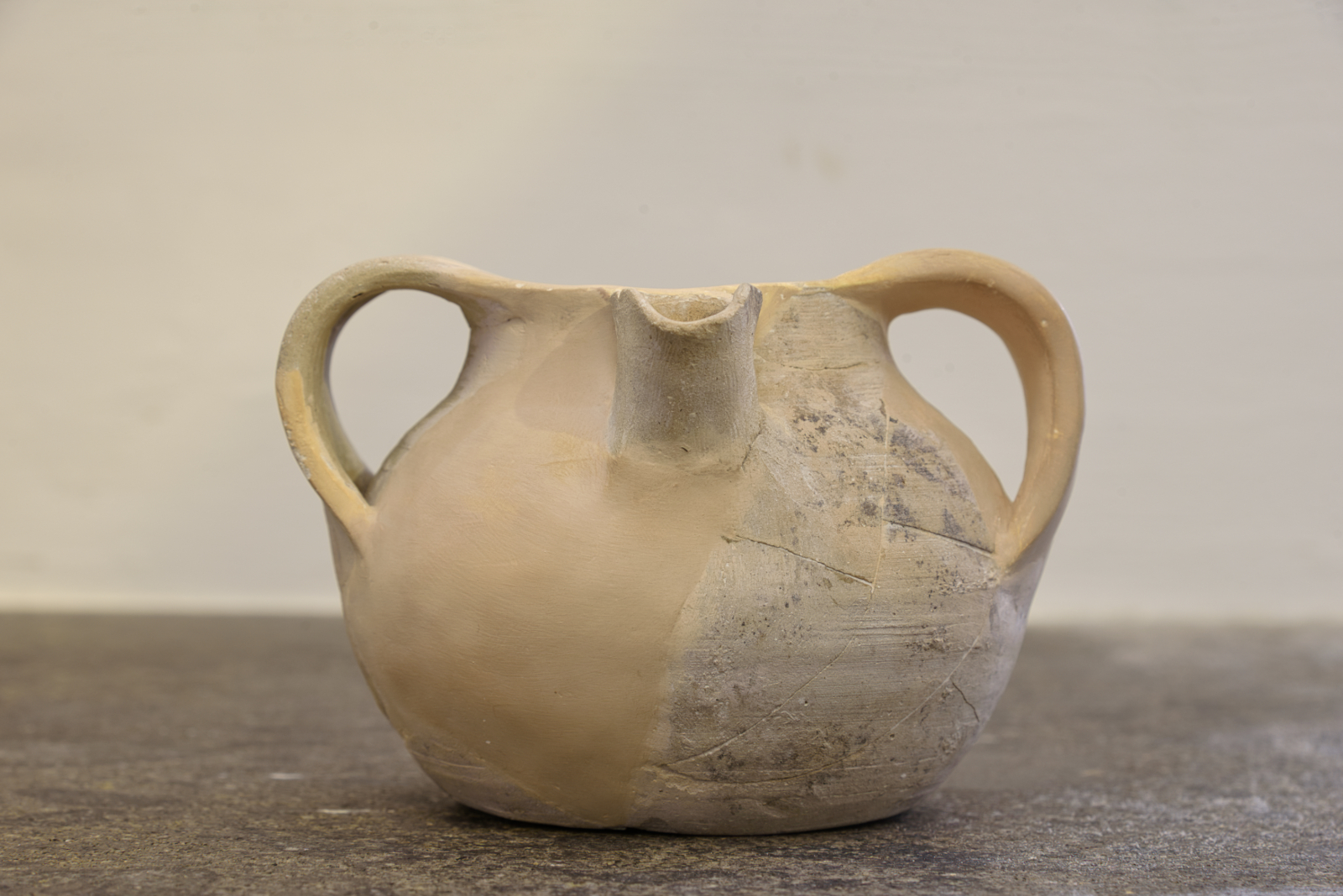
Panata. Second half 12th C. – early 13th century
The oldest Statute adopted by Viterbo, one of the main Italian cities of the time, dates back to 1251. It regulated the important activity of local ceramists and differentiated them as either figuli, i.e those who prepared the clay, or vascellari. The latter were those who modelled the shapes of the containers and were the first to decorate them.
In the early 14th century, with the technological innovation of transparent glazes, the first painted decorations were created using brown tints from manganese and green tints from copper. This characterised production throughout the Middle Ages until the first quarter of the 15th century.
Alongside geometric figures, decorations of vines, acanthus leaves, palmettes and animals appear. These years saw the development of archaic majolica, made with a stanniferous varnish, which created a shiny, waterproof coating that covered the terracotta base in white, upon which the painted decorations became more evident. This production saw its most intense phase between the 14th and 15th centuries, with the introduction of heraldic coats of arms, commissioned by local aristocratic families, as decorations.
The end of the 13th century saw the introduction of the iron yellow colour inspired by Arab ceramics. Two thematic branches were followed: the religious (Agnus Dei and the Passion of Christ) and the profane, linked to the iconography of women.
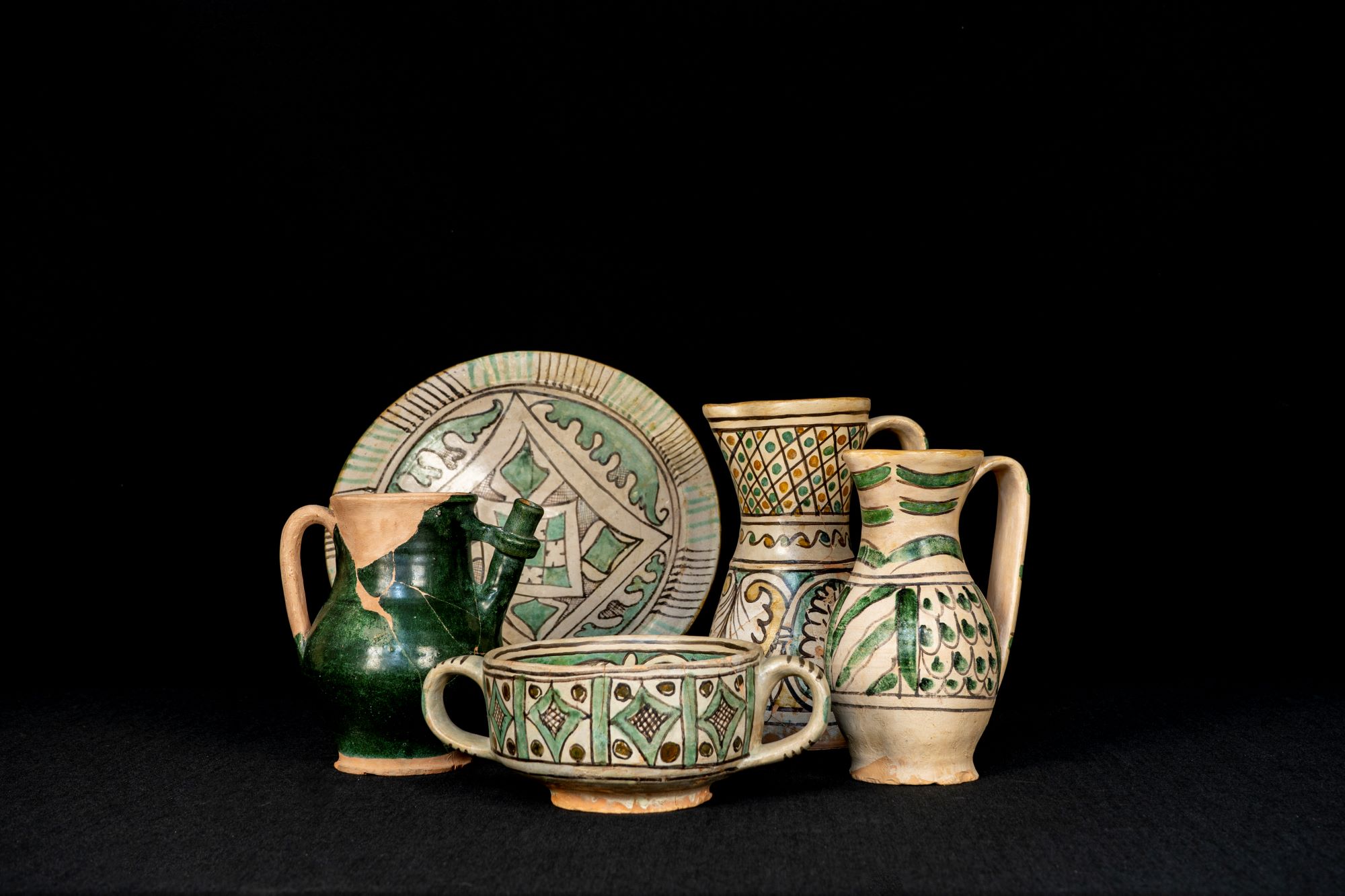
13th century
Between the 14th and the 16th centuries, pottery was mainly produced for apothecaries and chemists, with simple monogrammed decorations, although the products were often more detailed in the case of the items which were to be displayed for sale.
Due to the numerous outbreaks of the plague, the worst of which occurred in 1448, the population was almost decimated and, in the Statute of 1469, the entry into the city of foreign traders and artisans was favoured in order to revive the local economy.
The new pigments of yellow, from antimony, and blue, from cobalt, are added. The beginning of the 15th century marks the development of two innovative techniques: Green Relief and Zaffera.
Of note is the oak leaf decoration used as a filling and contour element.
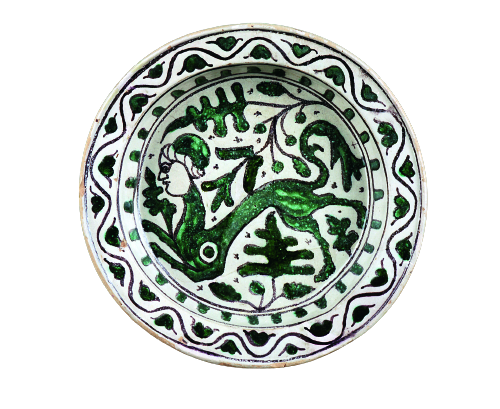
Basin in green relief. First half 15th century
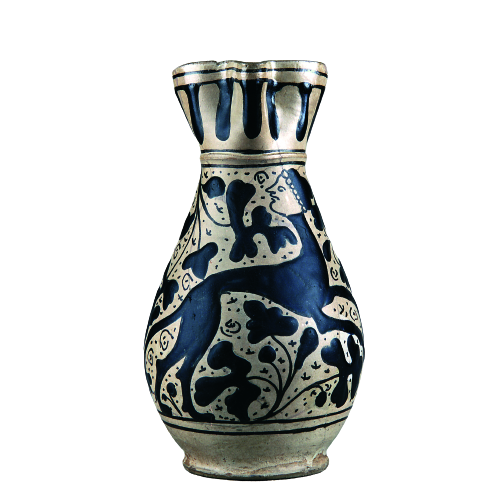
Jug in Zaffera. Second quarter 16th century

Artefact in Zaffera
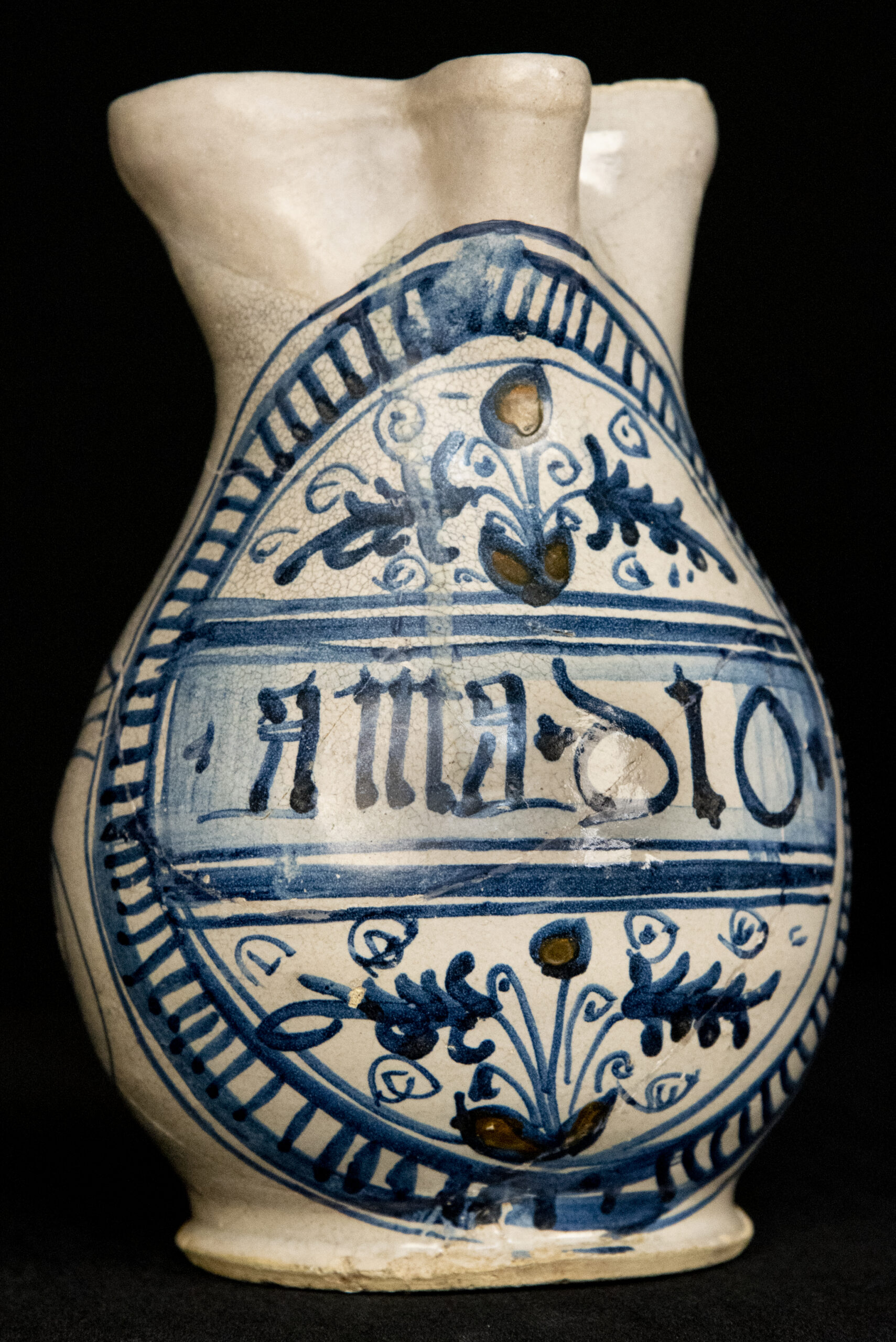
Love ceramics
In the 17th and 18th centuries, ceramic production within the city became less important, which favoured other territories in the province. In the eighteenth century, the city was chosen as a base by Bartolomeo Terchi, a talented ceramist whose clients included the Chigi and Giustiani families. Together with his sons Antonio, Filippo and Angelo Maria, he set up a majolica factory within the city walls.
From the early 1800s until the early 1900s, ceramic workshops were active in the area below the Colle del Duomo.
Lorenzo Tedeschi opened a factory for the production of ceramic tableware outside of Porta Romana in 1906. The business, from 1908 named the Società Ceramica Viterbese Tedeschi & C., was closed in 1968.
Photos: Museo della Ceramica della Tuscia – Fondazione Carivit, Viterbo
